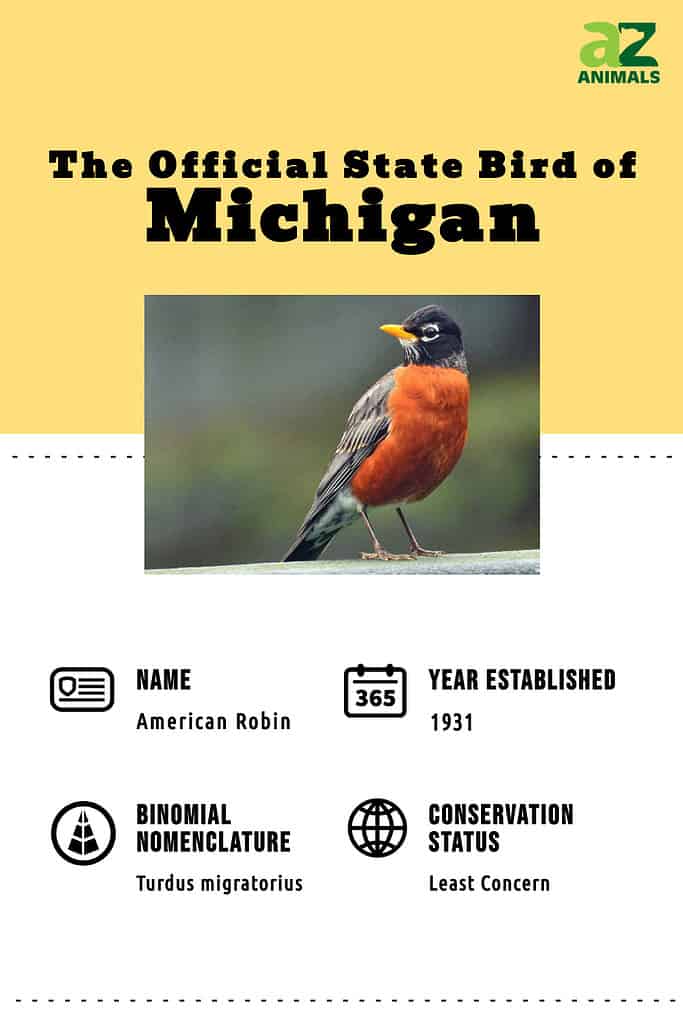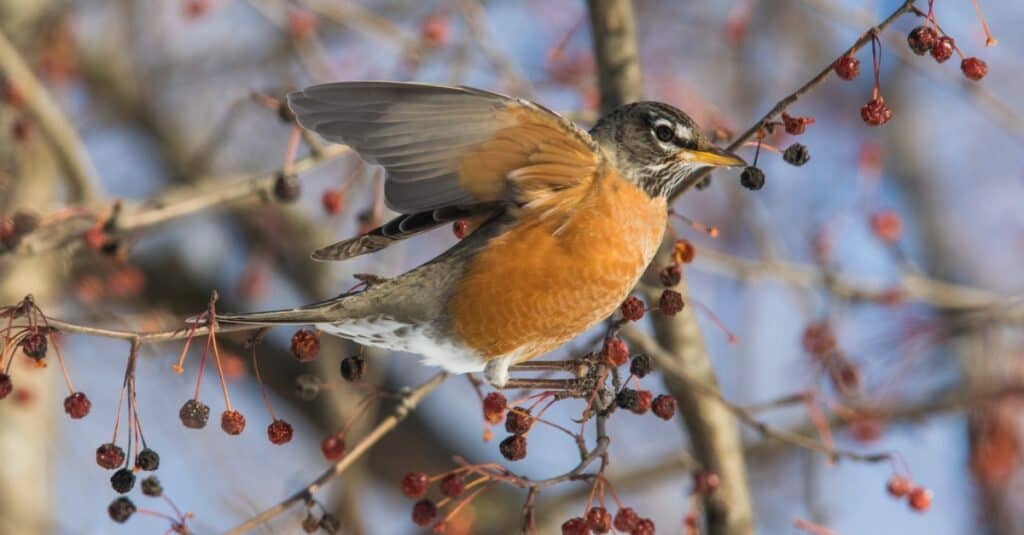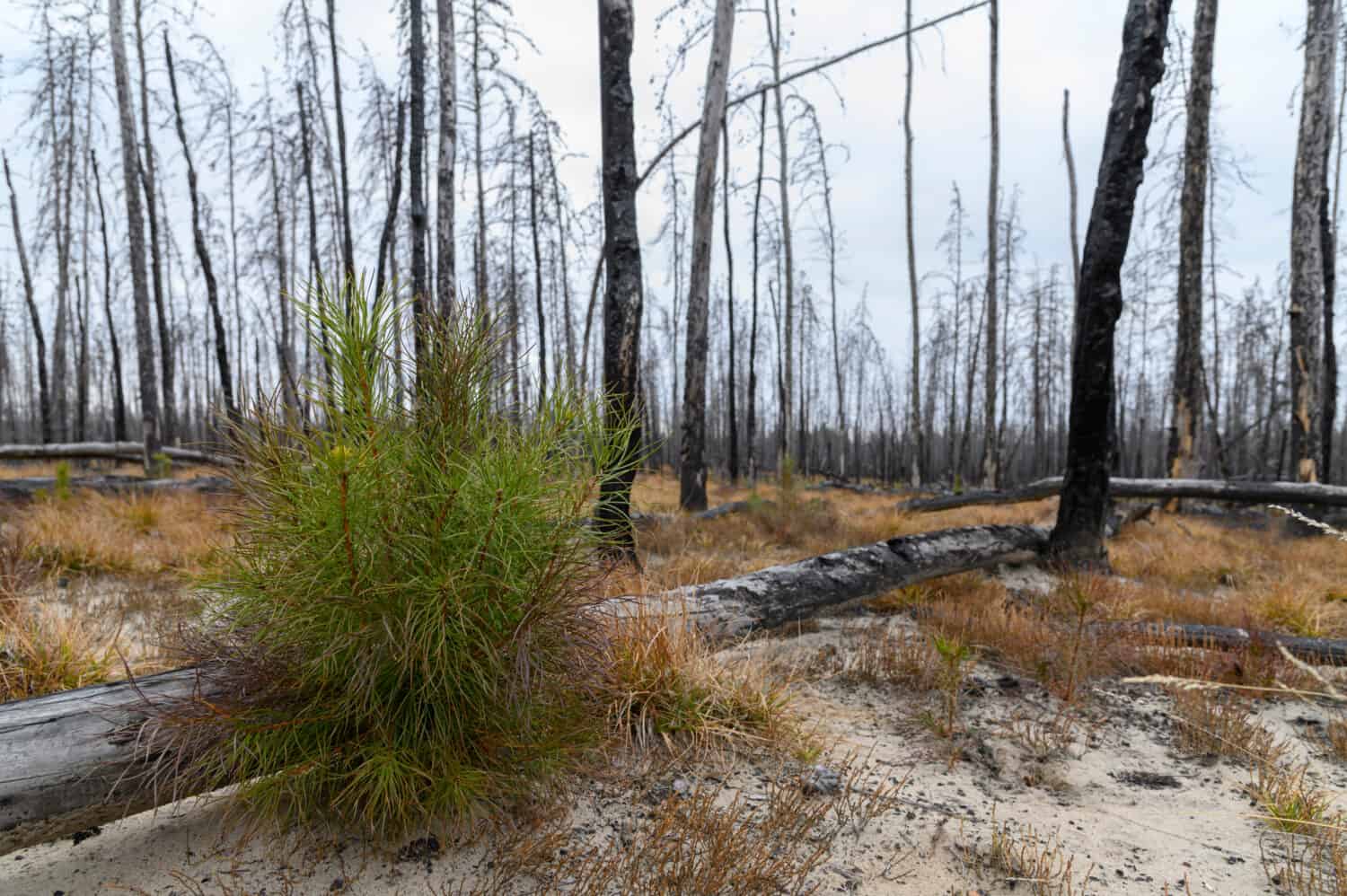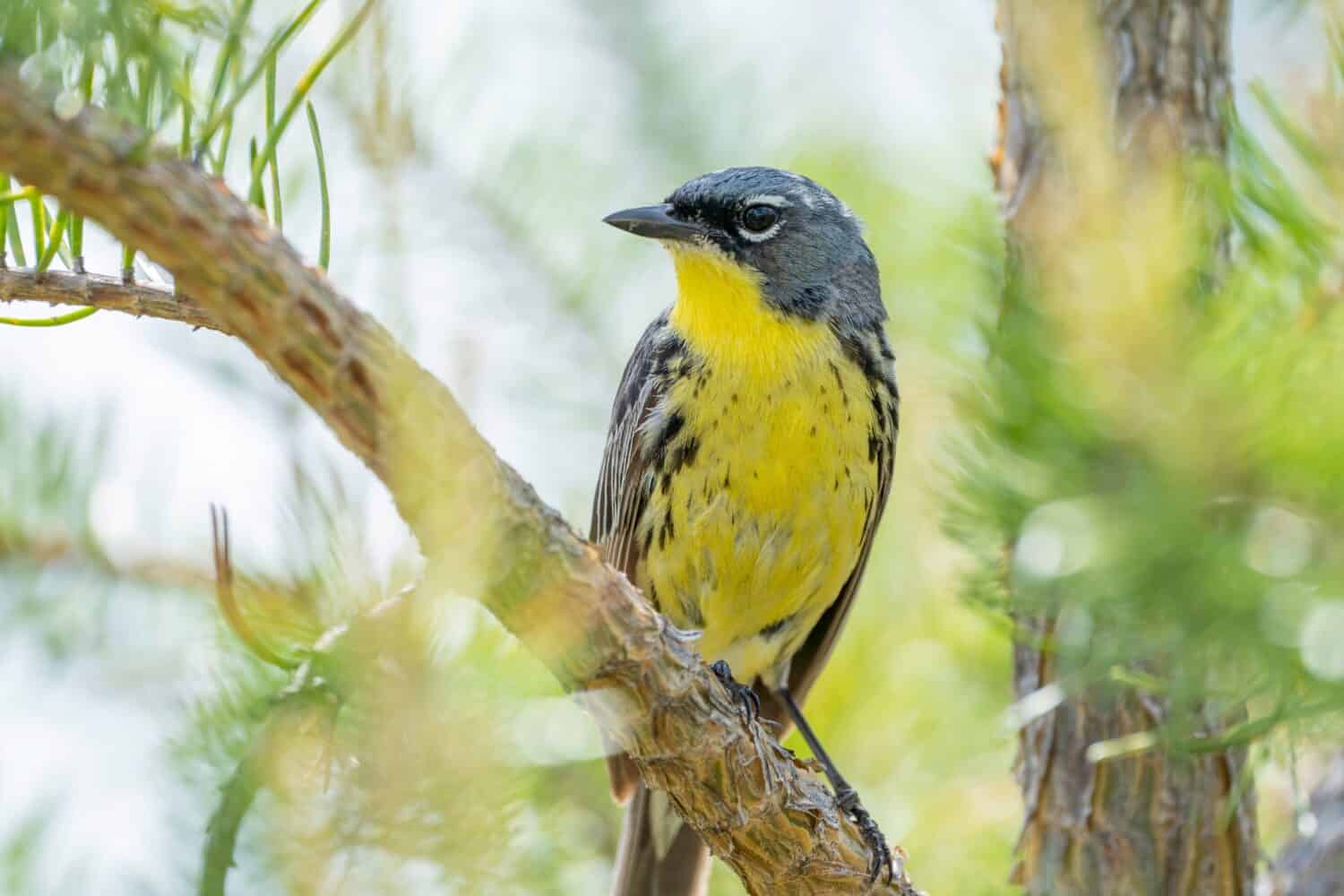Since its designation in 1931, the beloved American robin has been the state bird of Michigan. Also known as the robin redbreast, it is easily identifiable by its brown plumage, characteristic, deep red chest, and white crescents around its eyes. This bird is very vocal, especially during the spring mating season. Pairs of American robins are prolific egg-layers and are among the first birds to lay their eggs each year! For this reason, residents often regard them as a sign that spring is fast approaching. A pair can lay three to five eggs per clutch and may lay as many as three clutches per spring.

Where Does the American Robin Live?
American robins build their nests in a variety of places and as such are not overly picky about their exact location. A pair may build a nest on the ground just as often as in a tree. Though the nest’s elevation may not matter, robins are careful to build among dense branches and foliage. This ensures that their offspring are well-concealed and protected from predators.
These birds appear most frequently along forest edges, in orchards, scrub forests, and anywhere there are plenty of dense trees and shrubs. Residential areas often contain plenty of dense landscaping trees and shrubs, making them common nesting areas.
Many people believe that all the American robins leave the state during the winter and migrate south to warmer climes. This isn’t true, though! While many robins may choose to migrate south, some stick around throughout the winter. Though the temperature may drop and their food sources may change, they are usually able to adapt quite well.
What Do They Eat?
Like many birds, American robins are omnivorous. In the spring and summer months, they will feed on a mixed diet of fruits and berries as well as insects such as worms, caterpillars, and plant hoppers. Normally, these birds will prioritize fruit in their diet. They are very adaptable eaters, however, and will take whatever is the most available to them.
In the winter, as insect numbers decline, American robins that remain in Michigan transition to an almost entirely fruit-based diet. Fruits from fall-bearing trees and shrubs tend to make up most of their forage, but they will scavenge for dried summer fruits and seeds as well. Where available, the robins will take insect prey, though fruits are calorically dense and are usually easier to find. If fruit sources begin to dwindle, even winter robins will travel further to find more. Those that do leave will usually return in spring.

When insect populations drop off late in the year, the American robin relies heavily on fruits and berries.
©iStock.com/mirceax
Why the Title of Michigan State Bird is Contested
The American robin has always been a popular bird among residents of the state and it’s not a surprise that lawmakers gave it the title of state bird. Soon, however, it may pass its title to another bird that has long been the focus of conservation efforts — the Kirtland’s warbler. While the American robin holds state bird status in two other states, the contending species is the subject of an impressive recovery story that is unique to the state of Michigan.
About the Kirtland’s Warbler
Kirtland’s warblers, or jack-pine warblers as they are sometimes called, are quite distinctive birds. Adult males of the species are bright, steely-gray with black-striped feathers and a golden-yellow chest. They have a black face mask and, like the American robin, a white pair of crescents that surrounds their eyes. Females and young warblers are similar in color and pattern, but are less vibrant and lack the black mask. You can see a male Kirtland’s warbler and hear its call in the video below:
While they are certainly beautiful birds, Michigan residents hold them dear for more than just their appearance and song. Once ranking on the IUCN’s Red List of species in peril, the Kirtland’s warbler has made an incredible comeback. At one point, only about 200 mating pairs existed in the state. Due to conservation efforts from many Michiganders, however, the number of mating pairs today has increased more than ten times over! In 2019, having recovered considerably, the Kirtland’s warbler was officially stricken from the red list.
In honor of its incredible recovery from the brink of extinction, many lawmakers and residents of the state want to name it the new state bird of Michigan. Legislators introduced a bill in 2022 that would officially pass on that title. But why was the Kirtland’s warbler in such danger to begin with?
Why Was the Kirtland’s Warbler Endangered?
Kirtland’s warblers are the rarest songbirds in North America. As a species, these birds rely on a very specific habitat to build their nests — jack pine forests. Not just any jack pine forests, however. These birds will nest only in young jack pine forests, around 5-15 years old, that grow in a specific type of sandy soil. There, they make their nests on the ground where they receive cover from the low-growing grasses on the forest floor. As the forests age, the trees shade out the grasses and the forests are no longer suitable habitat.
You may be wondering: If the birds lose their habitat as the forests mature, how have they continued to survive at all? Wouldn’t the forests outgrow them pretty quickly? The answer to that is yes, certainly. Kirtland’s warbler relies on the destruction of the aging forests by forest fires. As the fires destroy older pines, they open up the forest canopy and allow the regeneration of the grasses they rely on to nest. As the grasses return, so do young jack pines and the cycle continues. Unfortunately, due to the spread of human settlements and overbearing fire management practices, that particular habitat has been in decline for years. Additionally, the specific soil the birds require only occurs in a few Michigan counties.

By suppressing naturally occurring forest fires, humans disrupt the normal succession of jack-pine forests.
©Michael O’Reilly/Shutterstock.com
To make matters worse, the warbler has had to contend with another bird species in addition to its habitat struggles. The brown-headed cowbird parasitizes the Kirtland’s warbler, replacing some of the warbler’s eggs with its own. The adult warblers then raise the cowbird’s young alongside their own, usually at the expense of the young warblers. While these birds were not the main reason for the warbler’s endangerment, the added pressure certainly didn’t help.
Successful Conservation
It has taken decades of conservation efforts to help restore the bird’s habitat. To recreate the habitat that the warblers need, conservationists encourage continuing jackpine forest succession. Every so often, they set fire to small areas of forest, creating ash beds, opening canopies, and allowing jack pinecones to release their seeds. They will also harvest older trees in certain areas on a schedule, planting new jack-pines in their place. Both methods produce young trees that provide the birds with the habitat they need within about eight years. The trees are harvested or burned as they age and the warblers move on to new nesting sites. Hopefully, with continued management practices like these, the population of Kirtland’s warblers will continue to grow and thrive throughout the coming years.

Low branches of young jack-pines provide the perfect cover for the Kirtland’s warbler nests in grass below.
©Matthew Jolley/Shutterstock.com
The photo featured at the top of this post is © iStock.com/weaver1234
Thank you for reading! Have some feedback for us? Contact the AZ Animals editorial team.






